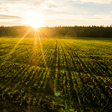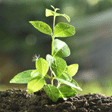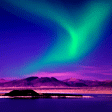- Home >
- Our Actions >
- Ambassador report
4
Comments
Rafflesia Truly Asia |
|---|
|
Sabah, in Malaysia-Borneo, is famous for its rich biodiversity. Sadly, many of these species unique to Borneo and Southeast Asia, including the Orangutans and Proboscis Monkeys, are facing extinction. My previous entry talks about hornbills, a majestic big bird that resides in rain forests. Today, I shall write about Rafflesia that is, in my opinion, the prettiest yet the smelliest flower in the world. Rafflesia is named after Sir Stamford Raffles, the founding father of Singapore. As the largest flower in the world, Rafflesia has strange characteristics that distinguishes it from all other typical plants. It is big with diameter of 80-100cm, dense and heavy of about 10kg, bright red in colour, and has the smell of rotten meat. Unlike many plants that start growing from their roots, Rafflesia is a parasite. It is unisex and it invades to live inside the strong vines of Tetrastigma genus, from which it absorbs all the nutrients it requires. The parasite matures over the period of 6 months-1.5 years and forms a cabbage-like bud on the surface of the vines. Slowly, it blooms into a single flower entity, without leaves, stems or roots, and becomes what we know as Rafflesia. At this stage, Rafflesia has 5 huge bright red petals, with wart-like orange structures scattered on them, and a central hollow space that houses bud-like hairy structures, and this is where its repulsive odor is emitted. The odour is not without function, as it helps to attract flies, which help to pollinate the flowers with different gender. Pollination is successful when they get to land on both male and female flowers consecutively, which is a rare event as most rafflesia of same gender cluster within the same range. This makes reproduction rarely successful for this plant. Rafflesia is unique to the ancient rain forests in Southeast Asia, notably in Borneo and Sumatra. It is however, rare to spot them even in the right locations because the condition required for this flower to grow, mature and bloom is highly selective. Rafflesia are sparse, scarce and unpredictable to spot and if we are so lucky to coincide with the blooming time of a flower, it only lasts 3-5 days. Deforestation has become the direct cause to the dwindling number of Rafflesia. It is strange to think something as beautiful as Rafflesia is a parasite. I am reminded again and again to judge the nature without any bias. With its short lifespan, scarcity and its inability to flourish under different environment, it has made lab studies on this flower to bear little result and understanding. Admittedly, just like the hornbills, there are so much more about the mysterious rafflesia that we do not understand, and we ought to do so urgently. On a personal level, I hope no manufacturers would base their perfume on rafflesia fragrance. https://www.tripsavvy.com/an-introduction-to-the-rafflesia-flower-1629480 http://www.endemicguides.com/Rafflesia.htm |

|
|
|










 Previous : Endangered Birds
Previous : Endangered Birds









4 Comments
hello jing you are great even in drawing, i did not now Rafflesia for sure it is my first time to hear it, thanks for sharing. keep it up
Posted 13-05-2018 22:13
Hello Jing Hui! Nice drawing with neat report!
It was the first time for me to know about Rafflesia when I was 8, and it was a Pokemon.
I later on found out that character is based upon a real world-famous flower in South East Asia countries, but did not know they are classified in endangered group.
As you had mentioned, its survival and lifespan are really tricky, so we have to take care of their species and reproduction.
Thanks for introducing rare and unique species!! Keep up with your next reports, too!
Posted 12-05-2018 02:55
Hello Jing!
Another great drawing!
Rafflesia really seems to have an unique way of reproduction since it is a parasite.
Thanks for the report :)
Posted 10-05-2018 23:47
Thanks for sharing!
Posted 10-05-2018 09:14